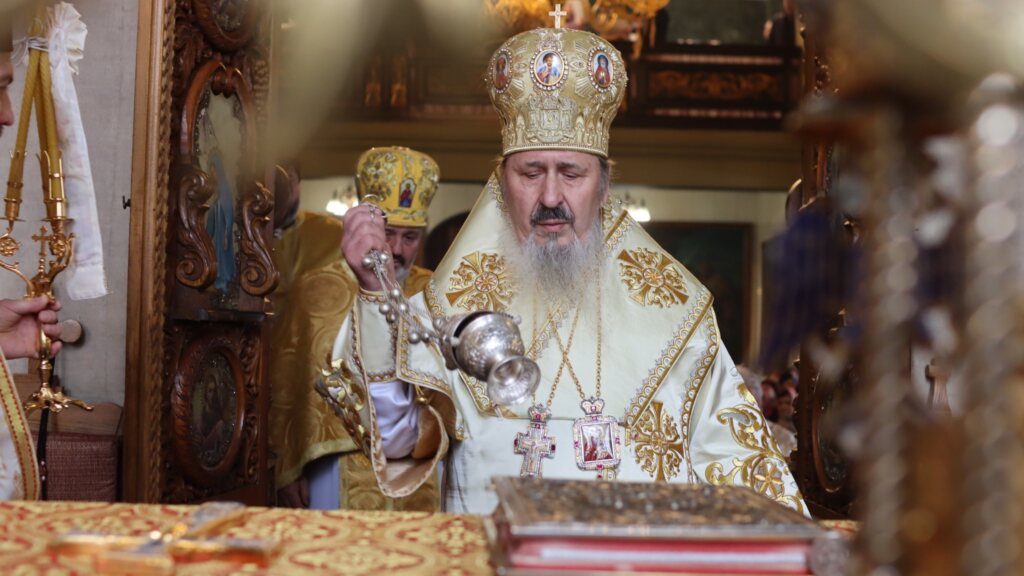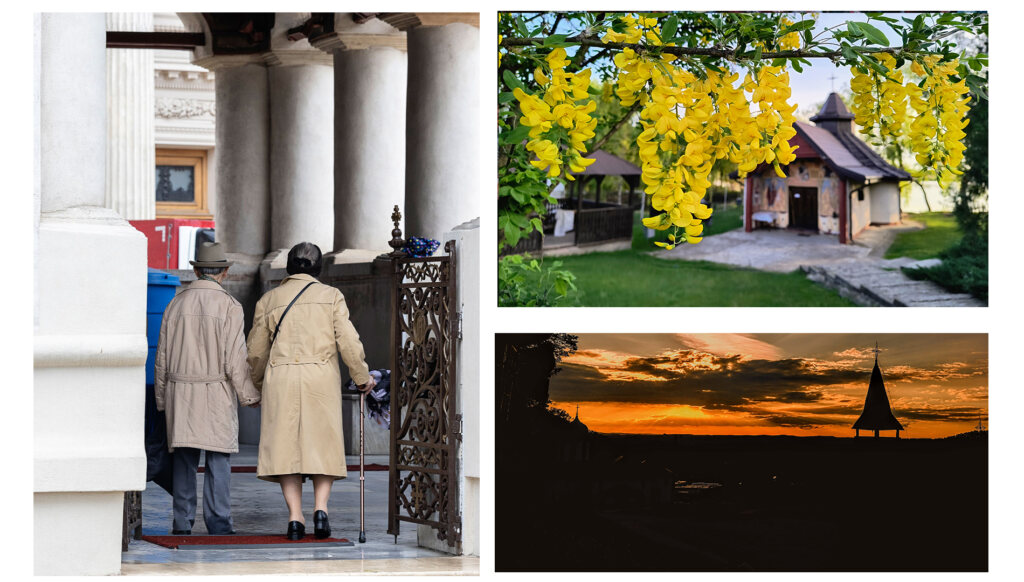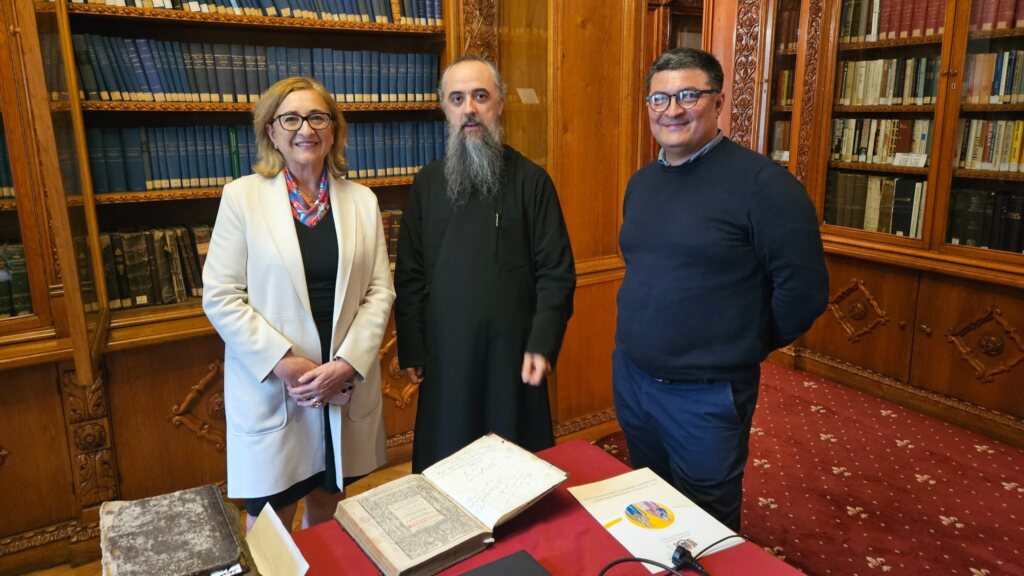As the feast of the Nativity of the Lord draws near, we publish a selection of twelve icons depicting the moments that precede and follow this important event in the history of the salvation of the human race.
“The Orthodox icon is also a call to prayer. The icon is not placed in the church primarily to admire how beautiful it is. It is placed in the church to help us meet with the saints in prayer. ”
– Patriarch Daniel
Tree of Jesse
Jesse was one of the ancestors of the Saviour, the father of the Holy Prophet David. The iconographic representation is based on Isaiah’s prophecy: ” A shoot will come up from the stump of Jesse; from his roots a Branch will bear fruit” (Isaiah 11:1).
Jesse is painted at the bottom of the icon and the tree comes out of his body. Kings and prophets of the Old Testament are depicted on the branches. In the upper or central part of the icon is represented the Mother of God with the Baby Jesus.

Annunciation
The Annunciation is one of the most important royal feasts and announces the joy of Christ’s coming to earth through His birth from the Virgin Mary.
The icon of the feast, painted in vivid colours, shows the Archangel Gabriel coming to bring the good news to the Virgin: “Do not be afraid, Mary; you have found favour with God. You will conceive and give birth to a son, and you are to call him Jesus” (Luke 1: 30-31).
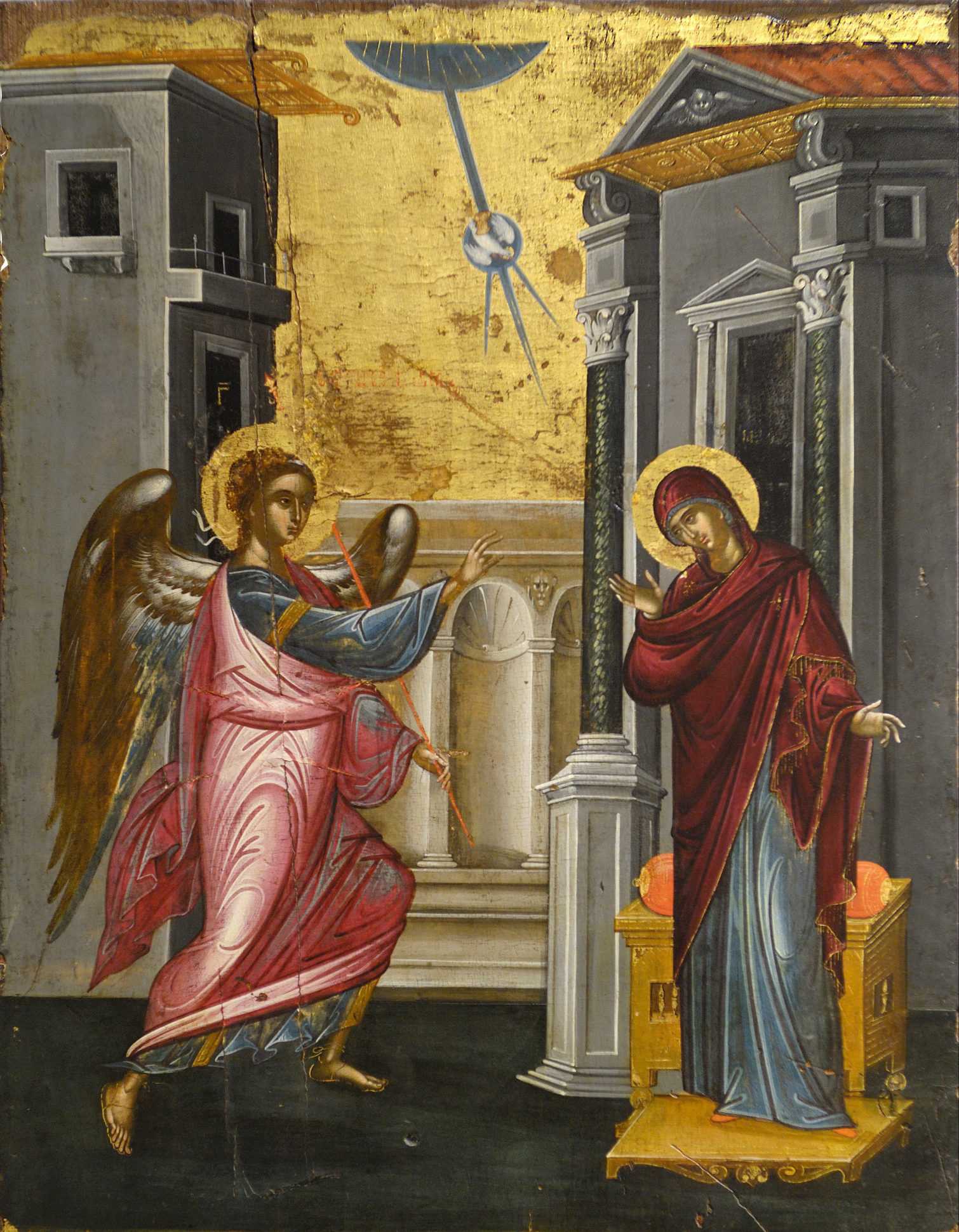
Dream of St. Joseph the Betrothed
This scene, in which the Angel of the Lord appears in a dream to the Righteous Joseph illustrates the biblical episode related by St. Matthew:
But after he had considered this, an angel of the Lord appeared to him in a dream and said, “Joseph son of David, do not be afraid to take Mary home as your wife, because what is conceived in her is from the Holy Spirit.
She will give birth to a son, and you are to give him the name Jesus, because he will save his people from their sins.”
All this took place to fulfil what the Lord had said through the prophet:“The virgin will conceive and give birth to a son, and they will call him Immanuel” (which means “God with us”).
When Joseph woke up, he did what the angel of the Lord had commanded him and took Mary home as his wife. (Matthew 1:20-24)

Nativity of the Lord
It is one of the most important icons because it testifies to the coming of God on earth, who “was made man that we might be made God” (St. Irenaeus of Lyon).
For this theme, an important landmark is the icon of the Nativity painted by St. Andrew Rublyov in the 15th century. It is currently housed in the Kremlin’s Cathedral of the Annunciation in Moscow.
The iconographic representation is based on the Gospel accounts and Old Testament prophecies and abounds in symbols and meanings.
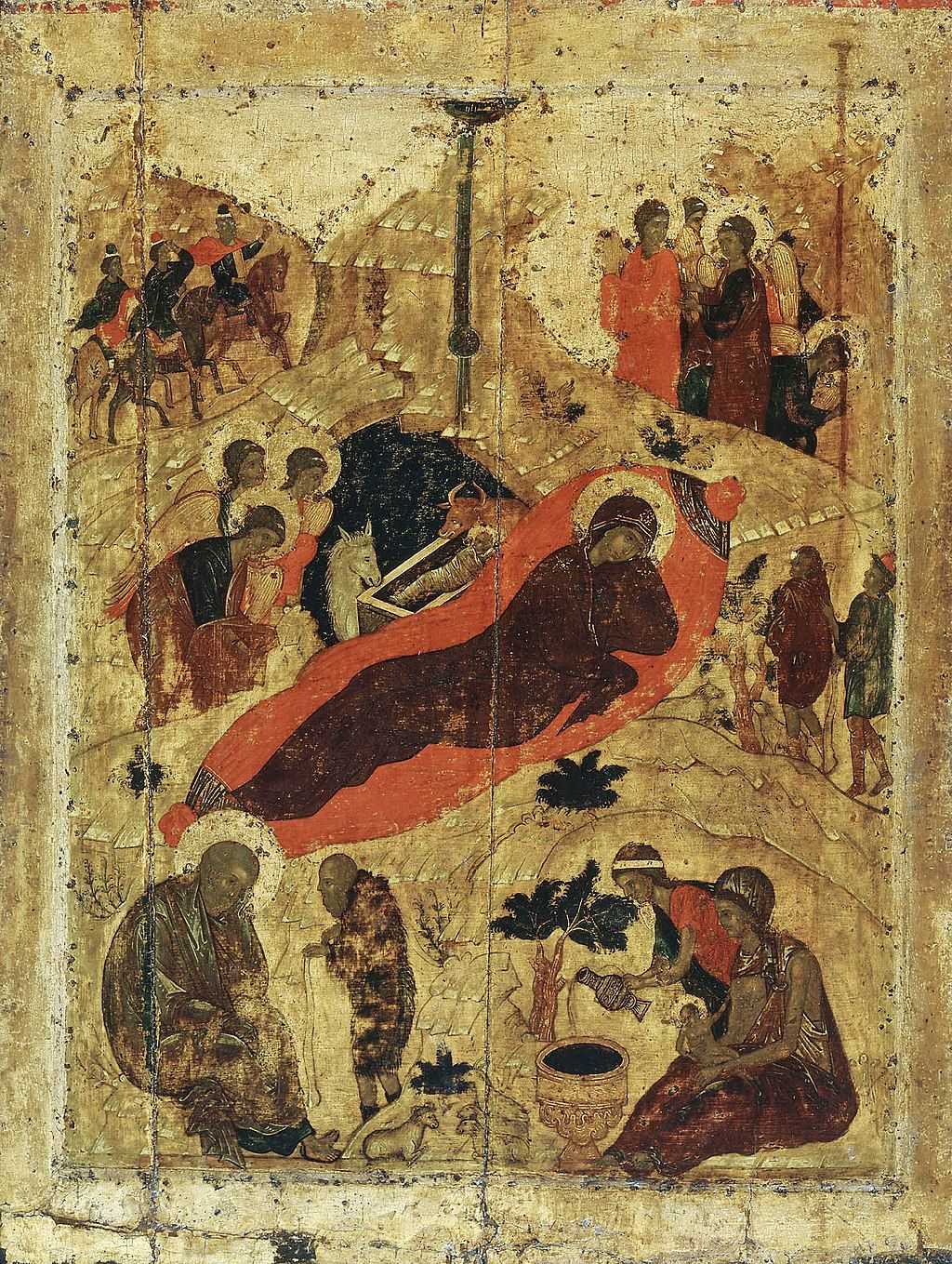
Adoration of the Magi
The icon depicts the moment when the three Magi from the East, Melchior, Balthazar and Gaspar bring gifts to the Baby Jesus: gold, remembering that Christ is the King of the world, myrrh, anticipating the use of myrrh at His funeral, and frankincense, symbolizing the divinity of Christ.
Christ is represented in the arms of His Mother, the Virgin Mary, and the Righteous Joseph behind them.

Presentation of the Lord
“The presentation of the Lord in the Temple commemorates the crucial moment in which a period of waiting, of preparation of the chosen people, ends.” (Patriarch Daniel).
The Righteous Simeon and Prophetess Anna, representatives of the Jewish people, see with their physical eyes the God-Child.
The righteous Simeon holds Christ in his arms, the Holy Prophetess Anna holds a parchment that reads, “This infant made heaven and earth,” and the Righteous Joseph offers two doves for sacrifice.

Flight to Egypt
The icon illustrates the verses of Matthew’s Gospel: When they had gone, an angel of the Lord appeared to Joseph in a dream. “Get up,” he said, “take the child and his mother and escape to Egypt. Stay there until I tell you, for Herod is going to search for the child to kill him.” (Matthew 2:13).
The evangelist also offers the explanation of the flight into Egypt: “so was fulfilled what the Lord had said through the prophet: “Out of Egypt I called my son” (Matthew 2:15).
St. John Chrysostom emphasizes in his Homilies on Matthew that “from the beginning, Christ was met with enmity and temptation,” and “Palestine persecutes the Child, and Egypt receives and saves the persecuted one.”

Massacre of the Innocents
The massacre of the innocent infants in Bethlehem is related only in the Gospel of Matthew, which also mentions the Old Testament prophecy:
When Herod realized that he had been outwitted by the Magi, he was furious, and he gave orders to kill all the boys in Bethlehem and its vicinity who were two years old and under, in accordance with the time he had learned from the Magi. Then what was said through the prophet Jeremiah was fulfilled: “A voice is heard in Ramah, weeping and great mourning, Rachel weeping for her children and refusing to be comforted, because they are no more. (Mattew 2:16-18)

Reclining Infant Jesus (Anapeson)
This icon highlights the human nature of the Saviour represented as a child, sleeping, with His mother and angels in prayer. The divine nature is highlighted by the signs in the halo, Ο ΩΝ (He who is).
The scriptural basis for this icon is found in the prophecy of Jacob, who likens Christ to a sleeping lion: “You are a lion’s cub, Judah; you return from the prey, my son. Like a lion he crouches and lies down, like a lioness—who dares to rouse him?” (Genesis 49: 9).
Another prophecy to which this icon refers belongs to the prophet David: “He will not let your foot slip—he who watches over you will not slumber; indeed, he who watches over Israel
will neither slumber nor sleep. (Psalm 121: 3-4).
Sometimes the scene is painted above the door on the west wall of a church, recalling the verse in the same psalm: “The he Lord will watch over your coming and going both now and forevermore.” (Psalm 121: 8).
One of the most famous iconographic representations of this theme was made at Protaton Monastery (Mount Athos) by the famous Manuel Panselinos in the 13th century.

The Milk-giver Icon of the Mother of God (Galaktotrophousa)
The iconographic representation in which the Holy Infant Jesus feeds on the breast of His Mother is less common. The icon emphasizes both the deep connection between Christ and His mother and the fact that the Son of God had a human nature.
The most famous icon of the Mother of God the Milk-giver was originally found in the Lavra of Saint Savva near Jerusalem. According to a prophecy of Saint Savva the Sanctified, the icon was given to Saint Sava of Serbia, who took it to Hilandar monastery on the Holy Mount Athos, where it is still found today.

Christ Emmanuel
The icon depicts Christ as a child or young man, suggesting that He was born, raised, and lived as an ordinary person. The mature features and the high forehead, however, signify the interweaving of His human nature with the divine nature, as well as His wisdom.
This icon is inspired by the Old Testament words of the prophet Isaiah: “The virgin will conceive and give birth to a son, and will call him Immanuel” (Isaiah 7:14). St. Matthew the Evangelist also offers in the New Testament the explanation of this name: “which means “God with us”” (Matthew 1:23).

Our Lady of the Sign (Znamenie)
In this icon, the Mother of God is represented with her hands upraised in prayer (“orans”), and the infant Jesus in her chest in the circle. One of the oldest such representations has been identified in the catacombs of St. Agnes in Rome, dating from the fourth century.
The name of the icon is related to the prophecy of the Prophet Isaiah: ” Therefore the Lord himself will give you a sign: The virgin will conceive and give birth to a son, and will call him Immanuel” (Isaiah 7:14), but also a miracle from Russia.
In the Middle Ages, during an attack on the city of Novgorod, the people prayed in front of this icon to be freed from the invaders, and the Mother of God brought a dark cloud over them, making the attack impossible.

Photo: The icon of the Nativity of the Lord on the iconostasis of the National Cathedral in Bucarest. Credit: Lumina Newspaper
Follow us on Twitter: @BasilicaNews



